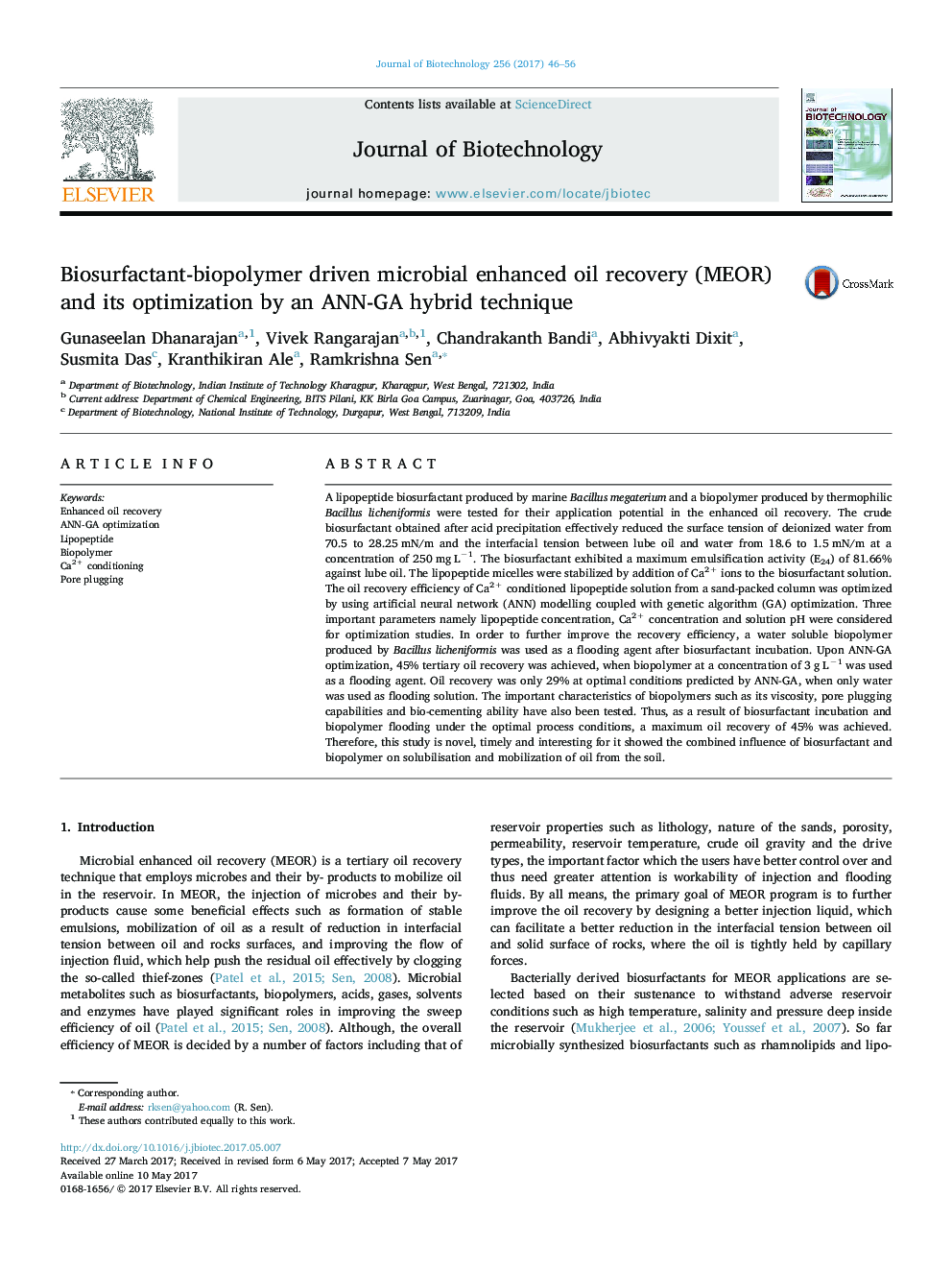| کد مقاله | کد نشریه | سال انتشار | مقاله انگلیسی | نسخه تمام متن |
|---|---|---|---|---|
| 4753515 | 1416987 | 2017 | 11 صفحه PDF | دانلود رایگان |

- Microbially derived surfactant and polymer were employed in enhanced oil recovery.
- Biosurfactant exhibited a maximum emulsification activity of 81% against lube oil.
- Biopolymer showed excellent viscosity, pore plugging and cementing ability.
- Biosurfactant was conditioned using Ca2+ ions to improve its efficacy.
- A maximum oil recovery of 45% was achieved by ANN-GA optimization.
A lipopeptide biosurfactant produced by marine Bacillus megaterium and a biopolymer produced by thermophilic Bacillus licheniformis were tested for their application potential in the enhanced oil recovery. The crude biosurfactant obtained after acid precipitation effectively reduced the surface tension of deionized water from 70.5 to 28.25 mN/m and the interfacial tension between lube oil and water from 18.6 to 1.5 mN/m at a concentration of 250 mg Lâ1. The biosurfactant exhibited a maximum emulsification activity (E24) of 81.66% against lube oil. The lipopeptide micelles were stabilized by addition of Ca2+ ions to the biosurfactant solution. The oil recovery efficiency of Ca2+ conditioned lipopeptide solution from a sand-packed column was optimized by using artificial neural network (ANN) modelling coupled with genetic algorithm (GA) optimization. Three important parameters namely lipopeptide concentration, Ca2+ concentration and solution pH were considered for optimization studies. In order to further improve the recovery efficiency, a water soluble biopolymer produced by Bacillus licheniformis was used as a flooding agent after biosurfactant incubation. Upon ANN-GA optimization, 45% tertiary oil recovery was achieved, when biopolymer at a concentration of 3 g Lâ1 was used as a flooding agent. Oil recovery was only 29% at optimal conditions predicted by ANN-GA, when only water was used as flooding solution. The important characteristics of biopolymers such as its viscosity, pore plugging capabilities and bio-cementing ability have also been tested. Thus, as a result of biosurfactant incubation and biopolymer flooding under the optimal process conditions, a maximum oil recovery of 45% was achieved. Therefore, this study is novel, timely and interesting for it showed the combined influence of biosurfactant and biopolymer on solubilisation and mobilization of oil from the soil.
184
Journal: Journal of Biotechnology - Volume 256, 20 August 2017, Pages 46-56